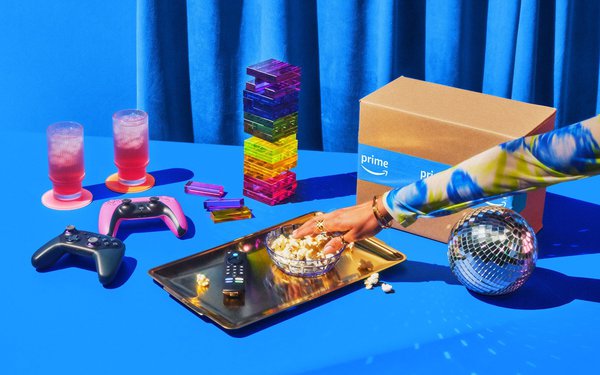back-to-school
Back-To-School Spending Will Be Soft, Parents Are Playing Hardball
- by Sarah Mahoney @mahoney_sarah, July 10, 2025

Image: Amazon Prime is promoting plenty of back-to-school deals.
Deloitte forecasts a flat outlook for back-to-school shopping, predicting parents will spend about $30.9 billion in the run-up to the opening bell. That works out to be about $570 per kid. While that’s down $16 year-over-year, it marks a 7% dip from 2021, despite higher prices in all categories.
And as expected due to an iffy economy, tariff phobia and a raft of new tech tools for bargain hunting, the totals may be the same, but there’s an indication that this is anything but shopping as usual.
Another hint of surprises to come: One early read of Amazon Prime Day reports a 41% drop in first-day sales, hinting that parents may well be holding off on that final click until they’re sure they are getting a better price.
advertisement
advertisement
Some of those value-seeking behaviors will come as bad news to brands, with 75% of Deloitte’s sample saying they’ll switch brands if preferred ones are too expensive, and 71% willing to wait longer if they can save on shipping. Loyalty isn’t what it used to be, with 30% saying they’ll switch retailers after just one bad experience.
Parents are also trimming other school-related expenses. Some 90% plan to sign their kids up for extracurricular activities, spending an average of $532 per child. That’s a $50 dip from 2024.
Those thrift-driven behavior changes don’t just have implications for big retailers: Consumers are recalibrating the way they define value in everything from CPG to financial products.
These parents say they plan to increase spending on apparel by 6%, while anticipated tech purchases are 8% lower. Budgets for school supplies are also eroding, down 3%.
Deloitte also reports a big shift toward nontraditional shopping tools, with 75% of Gen Z planning to shop via social media. And those who do shop this way spend almost twice as much as those who don’t.
AI is also having an impact, with 33% of parents overall planning to use some form of generative AI, and 67% of Gen Z parents doing so. For the many brands that still favor traditional ad placement over a more social—and shoppable—ecosystem, that could spell trouble.
One thing remains unchanged, though: Parents still recognize back-to-school as an essential and emotional shopping event. They still think that first-day outfit is deeply meaningful, and 57% say they can be tempted to splurge on that special look. And they’re listening to what kids want, too, with 62% saying their children influence what they buy.
Despite the early warning signs on Amazon Prime, however with Bloomberg reporting a 41% cratering in first-day sales, experts assume many parents will click "buy" before the four-day event closes. Deloitte says 53% of K-12 parents plan to shop during Amazon Prime Day. Quoting John Shea, founder and CEO of Momentum Commerce, which manages online sales for 50 brands, Bloomberg says that by stretching Amazon Prime Day across four days, shoppers are doing more treasure-hunting and will postpone purchases to make sure they don’t miss out on better deals.
And based on strong spending on all ecommerce over the first day, Adobe says it's reaffirming its forecast, with U.S. retailers expecting to drive a record $23.8 billion in online spend from July 8 to 11. If that holds, the growth will represent a 28.4% year-over-year increase, amounting to $9.6 billion more than the comparable period last year, and equivalent to two Black Fridays.


